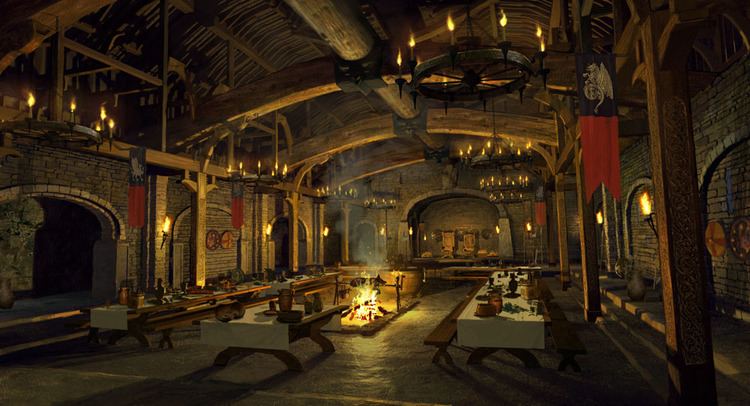 | ||
Similar Seamus Heaney, Joanne Whalley, Katheryn Winnick, Crispin Glover, George Blagden | ||
Heorot (/ˈheɪərɒt/ HAY-ə-rot), also Herot, is a mead-hall described in the Anglo-Saxon epic Beowulf as "the foremost of halls under heaven." It served as a palace for King Hroðgar, a legendary Danish king of the sixth century. Heorot means "Hall of the Hart" (male deer). The Geatish (Swedish) hero Beowulf defends the royal hall and its residents from the demonic Grendel.
Contents
- Heorot ristiretki
- Description and symbolism
- Location of Heorot
- In popular culture
- Science fiction references
- Tolkiens usage
- References

Heorot ristiretki
Description and symbolism
The anonymous author of Beowulf praises Heorot as follows:
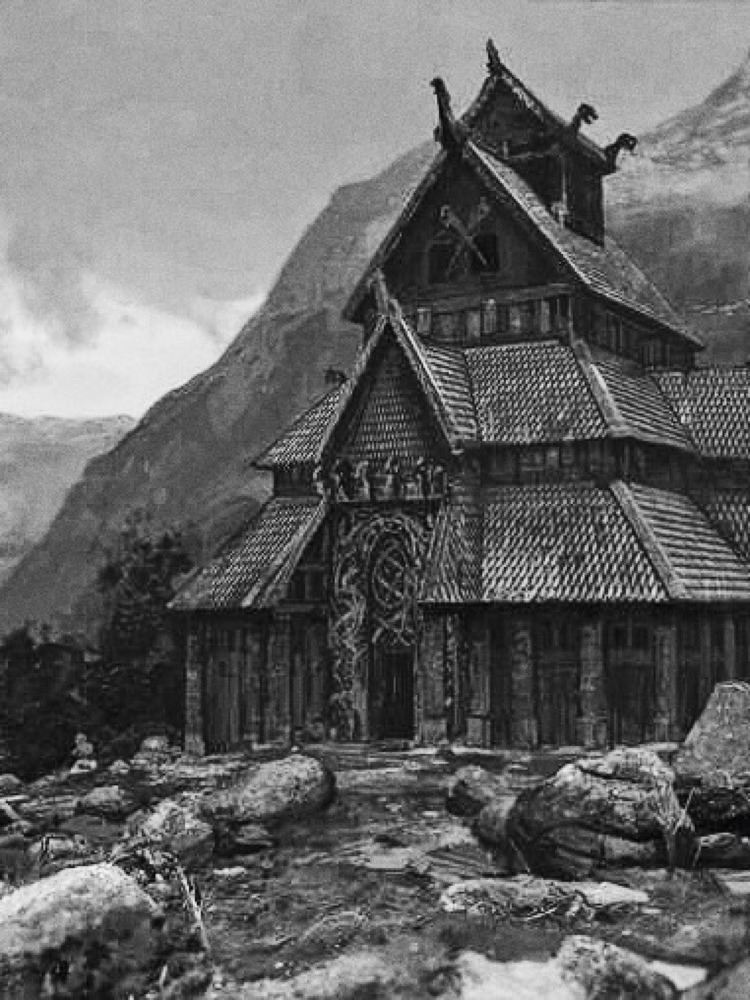
The hall was large enough to allow Hroðgar to present Beowulf with a gift of eight horses, each with gold-plate headgear. It functions both as a seat of government and as a residence for the king's thanes (warriors). Heorot symbolizes human civilization and culture, as well as the might of the Danish kings—essentially, all the good things in the world of Beowulf. Its brightness, warmth, and joy contrasts with the darkness of the swamp waters inhabited by Grendel.
Location of Heorot
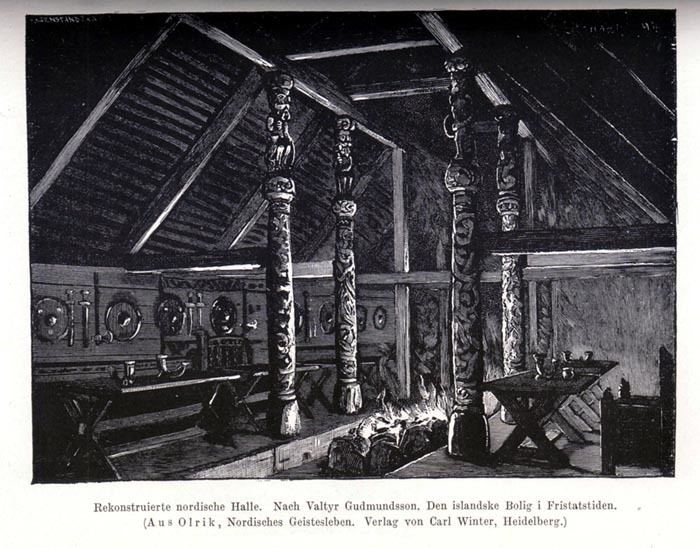
Modern scholarship sees the village of Lejre, near Roskilde, as the location of Heorot. In Scandinavian sources, Heorot corresponds to Hleiðargarðr, King Hroðulf's (Hrólfr Kraki) hall mentioned in Hrólf Kraki's saga, and located in Lejre. The medieval chroniclers Saxo Grammaticus and Sven Aggesen already suggested that Lejre was the chief residence of Hroðgar’s Skjöldung clan (called “Scylding” in the poem). The remains of a Viking hall complex was uncovered southwest of Lejre in 1986-1988 by Tom Christensen of the Roskilde Museum. Wood from the foundation was radiocarbon-dated to about 880. It was later found that this hall was built over an older hall which has been dated to 680. In 2004-2005, Christensen excavated a third hall located just north of the other two. This hall was built in the mid-6th century, all three halls were about 50 meters long.
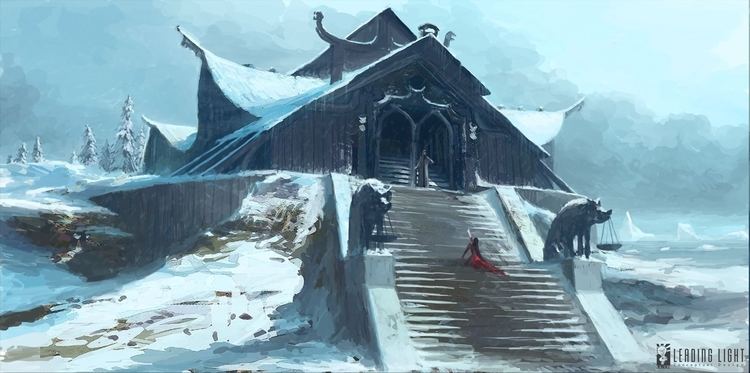
Fred C. Robinson is also convinced by this identification: “Hrothgar (and later Hrothulf) ruled from a royal settlement whose present location can with fair confidence be fixed as the modern Danish village of Leire, the actual location of Heorot.” The most recent publication on Lejre and its role in Beowulf is by John Niles and Marijane Osborn, Beowulf and Lejre.
In popular culture
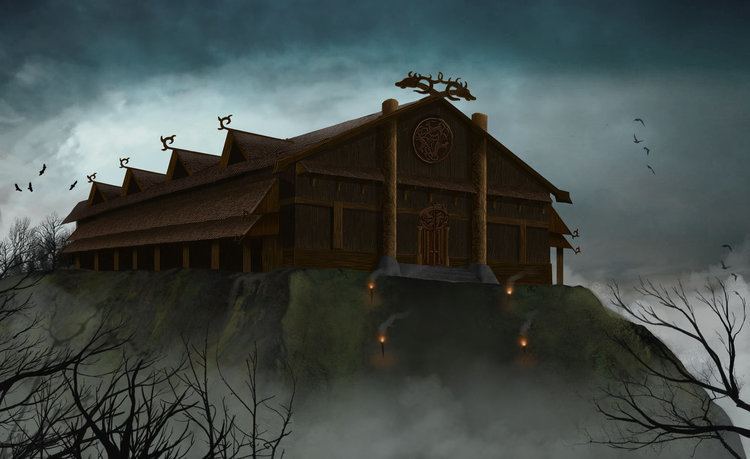
Science fiction references
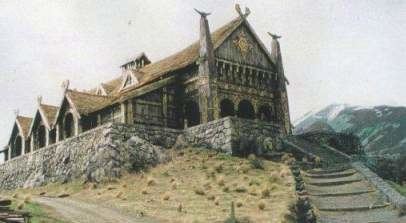
- The Legacy of Heorot (1987)
- Beowulf's Children (1995)
Tolkien's usage
J. R. R. Tolkien, who compared Heorot to Camelot for its mix of legendary and historical associations, used it as the basis for the Golden Hall of Rohan, Meduseld.
